- Register
- Log in to Tune-In
- Wishlist (0)
-
Shopping cart
(0)
You have no items in your shopping cart.
Beatles News
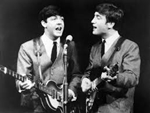
During a conversation with GQ Magazine, Paul McCartney talked about John Lennon, The Beatles, his guitar collection, and more.
When asked, "You've said in the past that you've occasionally dreamed about John Lennon. When was the last time?", the musician replied:
"I don't keep count, really, but it was probably about a month ago. The thing is: if you're a performer - or me as a performer, I find that dreams are often related to a gig or getting ready for a gig or being in a recording studio and I think a lot of performers are like that.
"So, often, John or George will be in there. And the good thing is you don't really think anything of it, it's just normal, like, 'Oh, yeah?' and you're just chatting away, talking about what we're going to do, as in making a record or something.
"So he's often there, I'm glad to say... And it's normally very pleasant, you know? I love those boys."
Source: ultimate-guitar.com
details
On Monday, August 17, 2020, the music city of Hamburg will be celebrating the 60th anniversary of John Lennon, Paul McCartney, George Harrison, Stuart Sutcliffe and Pete Best appearing live on stage as “The Beatles”. Due to the Covid-19 situation, the event will be solely available online – streamed directly from the Indra Club, the original venue in St Pauli.
As part of the two-hour program, the Fab Four will be honored with plenty of live music, stories about their legendary time in Hamburg as well as talks with renowned experts and former companions. Under the tagline “Stream & Shout”, the live show will be aired from 3:00pm (EST) here. Moreover, celebrating the occasion, the Elbphilharmonie Hamburg will be streaming a Beatles homage by jazz pianist Julia Hülsmann directly from its Grand Hall, starting at 2:00pm (EST).
Source: newjerseystage.com
details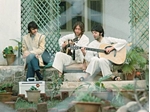
With new and vivid first-hand details and over 40 personal photos never-before-seen in any other movie about The Beatles, Emmy Award-winning Canadian filmmaker Paul Saltzman shares an extraordinary life experience in a new feature documentary, Meeting the Beatles in India.
Saltzman learned transcendental meditation while spending a week in 1968 at the Maharishi Mahesh Yogi’s ashram in Rishikesh on the banks of the Ganges River along with John Lennon, Paul McCartney, George Harrison and Ringo Starr. Photos and recollections not revisited for 50 years are brought to life.
Narrated by Oscar® winner Morgan Freeman with executive producers including Pen Densham and David Lynch, Meeting the Beatles in India adds vital details and context to one of the seminal cultural events of the 20th Century.
Source: latfusa.com
details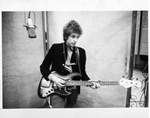
Paul McCartney and Bob Dylan had been unarguably two of a very powerful artists of their era — however somebody outshone them in John Lennon’s eyes. He most well-liked a distinct rock singer whose music is lesser-known. Interestingly, Dylan revealed his emotions about John in a music.
In a 1970s interview with Rolling Stone, Jann S. Wenner requested which modern artists John admired in any medium. John stated as a result of he was an “ego-maniac” he solely assessed one other artist by way of whether or not he noticed them as a menace. What did he imply by that? He didn’t elaborate.
After that, John stated he admired an eclectic group of musicians, together with Little Richard, Jerry Lee Lewis, and Frank Zappa. In addition, he praised the painters Andy Warhol, Salvador Dalí, and Marcel Duchamp. He then began discussing his spouse, Yoko Ono.
Source: Jeremy Spirogis/sahiwal.tv
details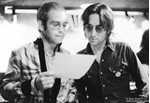
John Lennon and Sir Elton John, it seems, had an interesting relationship. In the movie Rocketman, a tribute to John is clear when Taron Egerton, playing Sir Elton, looks at a photo of John to influence his choice of stage name. While this isn’t strictly factual, clearly the pair had a close bond which was important enough to include.
Did Sir Elton John and John Lennon ever collaborate?
John Lennon and Sir Elton absolutely did collaborate, with some interesting circumstances behind some of their working together.
Both Sir Elton and John were keen songwriters, with Sir Elton usually relying on his writing partner, Bernie Taupin, to provide him with lyrics which he could set to music.
Interestingly, John and his Beatles writing partner, Sir Paul McCartney, did not have this issue, as they both contributed lyrics and music to one another’s compositions.
Source: Jenny Desborough/express.co.uk
details
Amid the unfolding horror and confusion of allofthis™, we all made a few promises to ourselves about lockdown. We would read more books, maybe learn a new language… and we’d do puzzles! Lego started selling out everywhere. Not the easy, ‘help-your-nephew-at-Christmas’ type, but the big bastards – the Tower Bridges, the VW Camper Vans, the kind of thing where an adult could say to themselves, ‘It’s OK – I’m still being an adult, because bridges and cars are ADULT things.’
Another of the things I was especially looking forward to in September was the new Beatles movie, Get Back, the Peter Jackson-directed re-telling of what became the fated ‘Let It Be’ film project. But, like so many things this year, it was not to be. Covid has put paid to many cultural events – Glastonbury, Tokyo 2020, theatre – and now 2020’s big Beatles release has joined them; we won’t find out until August 2021 whether Ringo retrieves the Precious.
Source: nme.com
details
In some ways, the Beatles' album art could be just as fascinating as the music inside. The stories behind 16 of their famous LP covers include a lengthy creative relationship, one-off moments of inspiration and weird experimentation, a memorable public outcry and a very sad goodbye.
Five of these 16 features images came courtesy of late photographer Robert Freeman, who worked with the Beatles from 1963-66. This fruitful era produced career-defining early cover art for With the Beatles, A Hard Day’s Night, Beatles for Sale, Help! and Rubber Soul, as well as a number of the band's EPs and John Lennon's books In His Own Write and A Spaniard in the Works.
The tasteful Freeman was notably absent from the creative process surrounding their most controversial cover from that period – the quickly yanked Yesterday ... and Today, which featured the in-famous "butcher cover." A series of iconic moments followed as the Beatles released Sgt. Pepper's Lonely Hearts Club Band, their self-titled White Album and then Abbey Road while working with a rotating group of new collaborators including Peter Blake, Richard Hamilton and Iain Macmillan. The first two were a study in contrasts, one busy and the other almost comp details
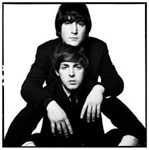
Lennon-McCartney were regarded as the backbone of The Beatles, with their songs changing the music scene. The pair have influenced a huge number of performers with their music and their creativity in the recording studio. While Sir Ringo Starr and George Harrison also contributed, it was John Lennon and Sir Paul McCartney who really made the magic happen - but even Sir Paul was left confused by how they were named.
There does not seem to be a reason why John Lennon’s name went first, except perhaps that the names were alphabetical.
Sir Paul described how the decision making took place, which he has said happened without him being there.
He even suggested the names would be swapped depending on who wrote the song.
He told The Telegraph in 2015: “We had a meeting with Brian Epstein [manager of the Beatles]. I arrived late.
“John and Brian had been talking. ‘We were thinking we ought to call the songs, Lennon and McCartney.’
Source: Jenny Desborough/express.co.uk
Read More<<< details
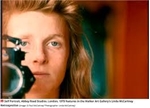
The wives of great men are so often cast in a supporting role, their lives dedicated to helping their spouses from the wings of the world stage.
Not so Linda McCartney, whose creativity and artistic flair was central to the relationship with her husband and Beatle Paul.
This is one of the many takeaways from the Walker Art Gallery's retrospective of her extraordinary photography, which opens in Liverpool tomorrow.
The collection of more than 250 black and white bromide prints, colour C-types, Polaroids, cyanotypes and contact sheets demonstrates not only what a talent she was in her own right, but how this first attracted Paul McCartney and was central to their marriage until her death in 1998.
Source: Laura Davis/liverpoolecho.co.uk
details

For the beginning musician, performing a cover is almost a rite of passage. It’s a win-win — the song is already written and, if chosen well, already beloved. So it makes sense that “Yesterday” — the most famous song off The Beatles’ 1965 album Help! — is not only one of their most popular tracks but also one of the most covered songs in history. With relatively simple music and lyrics, “Yesterday” is a pretty straightforward song to perform, but that doesn’t diminish its impact; the song’s beauty exists in its simplicity.
One of Paul McCartney’s greatest strengths is his ability to craft songs that not only remain timeless but continually reassert their relevance. For instance, “Blackbird”, an ode to the continued strength of Black Americans during the Civil Rights Movement in the ‘60s, has only become more relevant in the face of police brutality and the Black Lives Matter movement. “Yesterday” has proven itself just as relevant, maybe even more so each day. In a time of crippling uncertainty in every aspect of life, there is no more appealing thing to believe in than yesterday (or maybe like six months ago). “Y details

Sir Paul McCartney has admitted he found his late Beatles bandmate John Lennon's song 'How Do You Sleep?' “hurtful”.
The track from Lennon's 1971 solo album, 'Imagine', was penned after McCartney successfully dissolved the Beatles partnership in a High Court lawsuit, and after the iconic Liverpool group's frontman slammed his bandmates - Macca, Sir Ringo Starr and the late George Harrison - in an interview with Rolling Stone magazine in 1970, the year they split.
McCartney and his then-wife Linda reacted by having ads published mocking Lennon and his now-widow Yoko Ono, which saw them dressed up as clowns.
'How Do You Sleep?' was penned in response to McCartney's solo LP 'Ram', which featured the track 'Too Many People', which he later admitted intended to slam Lennon.
Source: music-news.com
details
1966’s Revolver is the album that ultimately cemented The Beatles‘ reputation as creative studio geniuses atop the pyramid of commercial music at the time. It may not have the epic range of material as heard on The White Album, or the cohesiveness of Sgt. Pepper’s Lonely Hearts Club Band released the following year, but Revolver marks the first time where the Beatles truly stepped outside of their comfort zone in the studio and expanded the idea of what rock and roll could be.
Coming off 1965’s Rubber Soul, the Beatles were at the peak of their fame. Yet, each member was growing increasingly disillusioned with all that was involved with “The Beatles” and their growing legion of fans. John Lennon was perhaps the most affected, causing a huge uproar in the United States when he proclaimed that the Beatles were “bigger than Jesus Christ.” The demands of the road, the size of the shows, and the non-stop schedule had pushed the band to their limits, so they cleared a few months from their calendar to give themselves time to prepare for their next album.
Source: Gideon Plotnicki/liveforlivemusic.com

Sir Elton John’s concert residencies in Las Vegas were, in his own words, a “spectacular and successful” chapter in his career. Just don’t expect Sir Paul McCartney to follow suit.
In remarks unlikely to keep him on Sir Elton’s Christmas card list, Sir Paul has described Las Vegas as an “elephants’ graveyard” where the stars “go to die”.
The former Beatle was asked by an interviewer if he had “ever considered doing a residency in Vegas, like Elton John, or doing what Bruce Springsteen did on Broadway?” Springsteen performed five nights a week for more than a year at a theatre in New York City from 2017-18, while Sir Elton played 450 shows over two residencies at Caesars Palace to 1.8 million fans.
“Some people would like me to do it, as they say I’ve got plenty of stories and plenty of songs, but one of the things that’s holding me back at the moment is that Bruce has just done it, you know?
Source: Anita Singh/telegraph.co.uk
details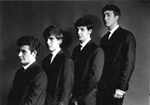
Arguably the most ignominious firing in rock history happened on Aug. 16, 1962. Shortly before recording their debut single, the Beatles dismissed drummer Pete Best.
Two months earlier, the group passed an audition for Parlophone Records. But while producer George Martin liked what he heard, he was dissatisfied with Best. He told the Beatles that, while they could use Best onstage, he was going to bring in a session drummer for the recordings. The other Beatles, along with manager Brian Epstein, discussed the situation and decided that it was in their best interests to sack the drummer entirely. On Aug. 16, Epstein called Best into his office and told him the news that he was out.
Known around Liverpool as "mean, moody and magnificent," Best had joined the Beatles almost exactly two years earlier when they needed a drummer for their upcoming residency in Hamburg, Germany. His audition was only a few days before they made the trip. But his sullen personality never fit in well with the wisecracking Beatles, even refusing to adopt the soon-to-be-famous "Beatles haircut."
Source: ultimateclassicrock.com
details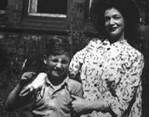
John's mother, Julia Stanley, was one of five sisters, along with Anne, Betty, Harriet, and Mimi all born in Liverpool. Stubborn and headstrong, Julia gave her parents an uphill battle when they disapproved of the hotel bellboy, Alfred Lennon she started seeing at the age of 14.
Then Alfred became a ship's steward, and his life and relationship with Julia survived long absences at sea and the war that followed. In 1938 they secretly married in a register's office because Julia's family still didn't accept him. Then Julia fell pregnant with John.
However, Alfred then sailed out of the picture entirely, and so Julia went back to live in her childhood home under her disapproving father's roof, but it didn't stop the string of romances that followed.
Julia then fell pregnant by a passing Welsh soldier. She gave the little girl up for adoption and then started dating "Bobby" Dykins whom she met while waitressing. During this time, 5-year-old John was being looked after Julia's sister, Mimi, as she basically moved out and into Dykins' arms.
Source: Odette Odendaal/news.amomama.com
details